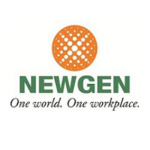There are many aspects that can be improved in this product. We're doing a lot of projects with customers. It would help if there was a summary of the products. They should be able to do more upgrades of the product or offer new versions. They could also improve the user experience.
They have to think about how to make the environment over. Make it in some containers, for example. The complexity of installation can also be improved. They should re-imagine the way that they install products.
I've been using the solution for 18 years.
The solution is very stable.
The solution is very scalable.
We use various solutions that aren't really similar, but are in the same field. There are lots of products that pretend to do enterprise content management. I have sample projects with SharePoint, and Microsoft Checkpoint among others.
In terms of the initial setup, you have to have some requirements. I am technical specialist in finance, so I can do installation as well, but it's not easy for everyone to handle.
You have to know it takes time, you have to be very careful and know exactly what you are going to do. You need a good knowledge of the production system, middleware, application services, servers databases, etc. It's not as easy as other products.
How long it takes to deploy the solution depends of the requirements. It can take from six months to two years. It depends on a lot of factors including the modules, because you want a summary, and which remodels are the customer needs. The solution is modular, so you may have lots of modules.
We use the on-premises deployment model.
I'd rate the solution eight out of ten.

















